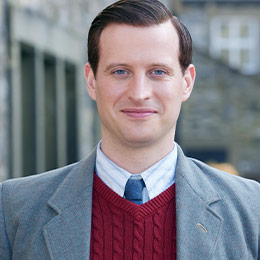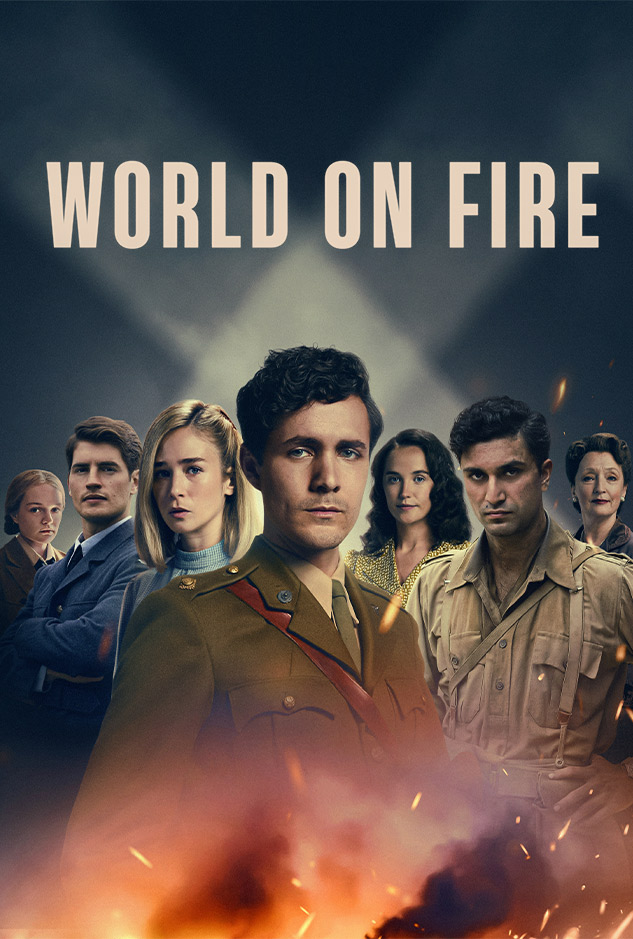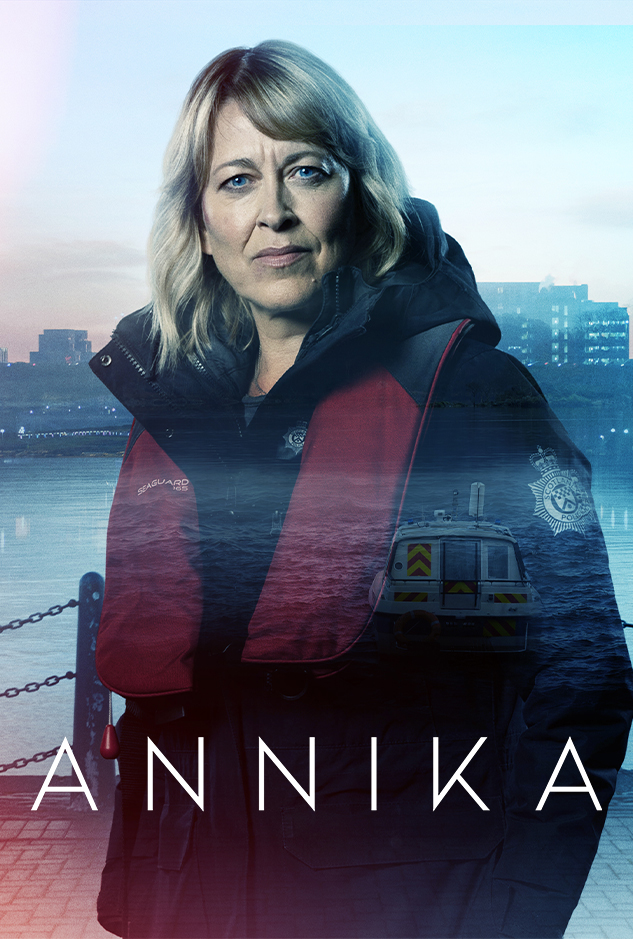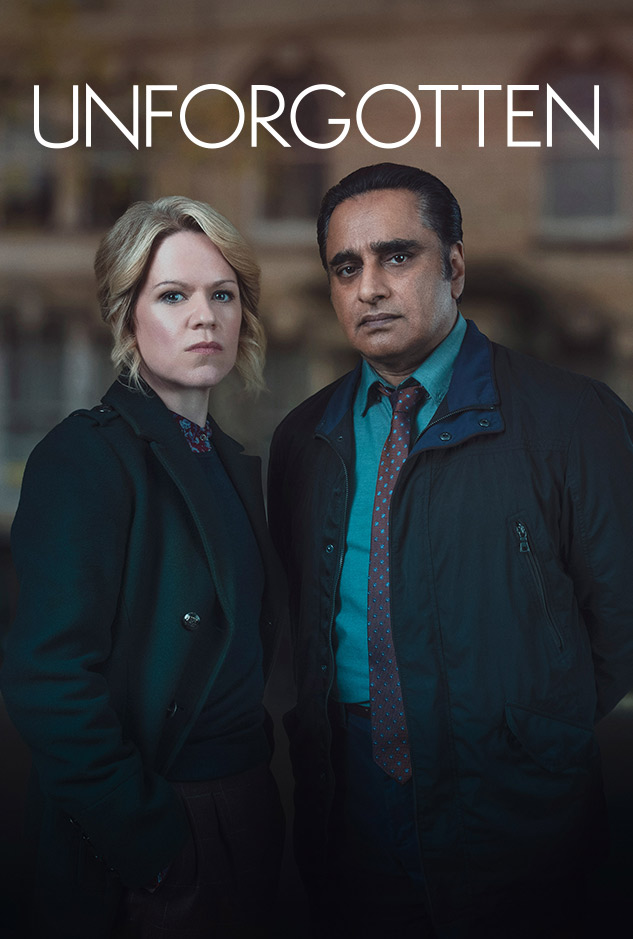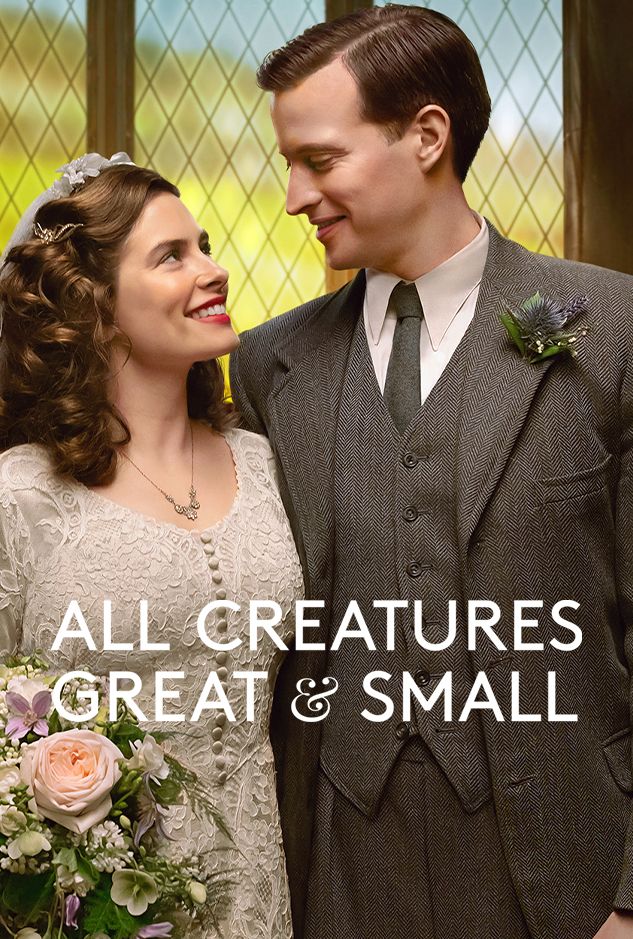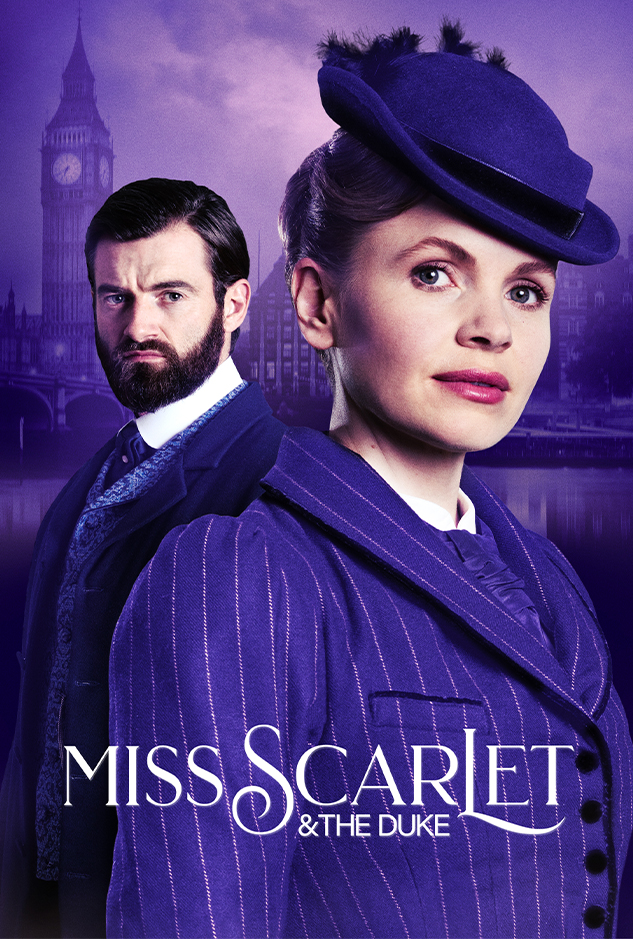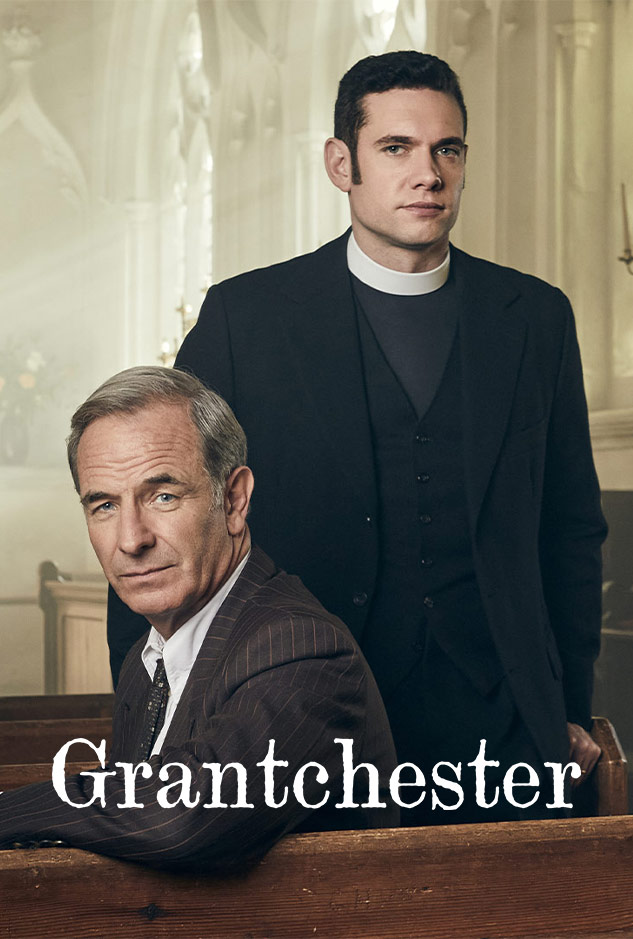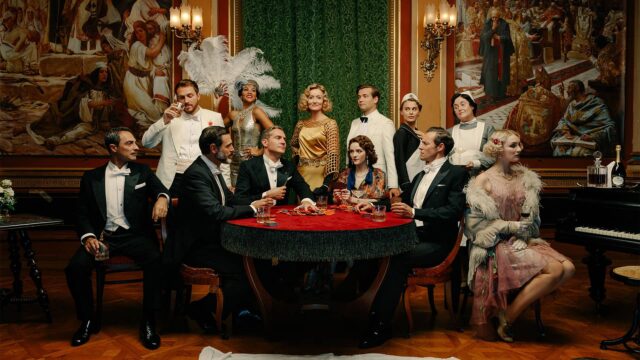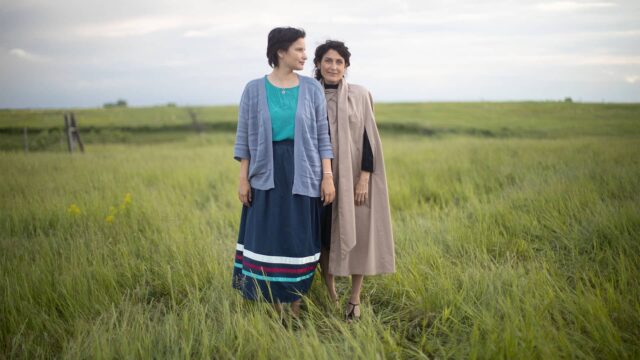The Mouthwatering Food of All Creatures Great and Small
From toast to roasts, breakfast to Christmas, find out how All Creatures Great and Small‘s delectable food makes it from the page to the table to the screen. In an interview with MASTERPIECE, stylist/home economist Bethany Heald shares cooking and filming details, cast member favorites, food history, and even her very own shortbread recipe. Bon appétit!
Let’s start with the main course: the food. Are there any favorite dishes among the cast?
The roasts, beef roasts, real kind of hearty, traditional fare, are always a favorite. Particularly Callum Woodhouse [Tristan]—I think he has a soft spot for roast potatoes. Well, all of them do, actually! There are a few allergies that you need to take into consideration, and if you look closely there might not be the same things on everybody’s plates, but on the whole, they’re pretty good and pretty greedy. So that helps. And breakfasts are definitely a favorite.


What are the components of their typical breakfast?
I’ve got a brilliant, really traditional butcher that makes the black pudding [“blood sausage” in the US] on a big tray in a very traditional manner. It’s not like the overly processed tubes that you can buy in the supermarket, so I go to him for that. They cure their bacon—he does it specifically for me, a special order that comes straight from the farm. It’s the whole of the bacon, the back and the streaky all joined together in one big piece, done in a very traditional cure. It’s their secret recipe, and I wouldn’t be allowed to disclose it to you even if I knew. Viewers might not notice these things, but I know. So it’s very authentic.


We’re really lucky, filming where we do, because there are some really fantastic authentic traditional butchers and they make wonderful pies. They make them in a very traditional way, and they decorate them—I don’t do that myself, they do that all for me, which is really lovely. And they’re delicious. If I remember correctly, there’s always a pork pie in every [season]. Pork pie is a massive favorite.
But whenever I’m cooking the black pudding, there are certain members of the crew as well as the cast that miraculously appear at the kitchen door, because the ceilings are all open into the studio, so the smell sort of permeates around the set and people follow their noses and appear. “Just checking if there’s any spares.” So bacon, sausages, black pudding, eggs—scrambled or fried are usually the preferences. There’s sometimes cabbage and toast, jam, butter…
Often when they’re eating, there’s take after take after take, and all the different angles to film. So on a breakfast scene, we can sometimes go through the equivalent of about 40 normal human size breakfasts, because they’re eating the food. And sometimes the actors get really miffed because there’s too much dialogue, so they’re not allowed to eat because they can’t rechew and say their lines. There was one scene when the table had to be laden with breakfast and they weren’t allowed to eat anything, and as soon as the director called, “Scene complete,” all of them dived in and demolished these breakfasts that they’d been drooling over for the last two hours.
What would the meals with the roasts entail, and what do you have to consider in making them?
So again, they are quite traditional. It’s a goose for Christmas because turkeys didn’t really start being widely available until a bit later. And roast potatoes, roast parsnips, pigs in blankets…things haven’t really changed that much. What’s very important is the seasonality, because obviously, green beans weren’t flown in from Kenya in the middle of winter. We’re always checking the season that we’re filming in to make sure that it’s right. Hence, there’s a lot of cabbage—if in doubt, there’s always cabbage around, cabbage and carrots. The vegetables in the winter might not look quite as exciting as I would like them to, but we need it to be authentic.


How do you get the food from the page to the screen? What’s your process?
I get the brief from the set dresser, who sends me the script pages. Sometimes there’s no scripted food and we just can do what we feel like. But quite often it’s scripted that it’s breakfast, or they’re talking about eggs a lot, so it has to be egg-heavy. From that, I look at what we can do and send a list of suggestions. Sometimes it needs to get approval from higher up, and sometimes we just do what we feel like doing. And then I cook and prepare the food. I do some of it at home so that I can work it around my busy life with three children and a dog. And then I go down to the set for filming and prepare it.
Besides seasonality, what are some of the things you have to take into consideration for the food?
Sometimes, there are logistics that are quite difficult. With things like beef Wellington, I was thinking, “Oh no, please don’t let them be carving it and serving it and pouring gravy over it.” Because then you have to prepare vast amounts. Seeing it just halfway through the meal is always the dream.


And there are time constraints, foods that you don’t want to use—ice cream is obviously a disaster, but that wasn’t really around then, so we can get away with that. In Series 2 there was a big blancmange that Mrs. Hall was piping, which is always like, “Oh, no!” You have to triple the gelatin in that so it’s not going to melt. There are little tricks you can do, but when they’re eating it, you can’t really do too much to it. You just have to make it work.
![]()
![]()
It seems almost like you have to be part incredible cook, part historian—do you the historical research yourself, or do others on the production?
A bit of both, really. If I’m not sure about the food, I research it. Like Worcester sauce [Worcestershire sauce in the US], we were just checking. With the power of Google: “What year did Worcester sauce suddenly appear?” Things like that I, and the art department, check. And things like sweets—sweet wrappers, cellophane wrappers…


Then with the time period, we’re making sure that we’re not using eggs that have a date stamp. It’s obviously fine for scrambled eggs, poached eggs, that sort of thing, but it wouldn’t do for eggs and soldiers or boiled eggs. We have to scrub the date marks and stamps off them, which can be quite labor intensive.
Were there any particular items that required research or a special historical touch in Season 3?
For the wedding cake, we did lots of research into cakes of the era. I’ve got a whole storyboard of different cakes from that era. We wanted it to be quite decadent and we thought Mrs. Hall would’ve pushed her boat out and really made an extra-special effort, so I made these little cameos with icing. I used a modern silicon cameo mold, but I matched the modern one to an antique one that we found—it’s so beautiful. That was a really lovely detail that you might not notice, but you’ve got to look closely at the really pretty cameos!


I had to make two matching wedding cakes, which was quite a challenge because we filmed the eating of the cake two weeks before we filmed Mrs. Hall finishing preparing the cake. So that one that went down well with me—I was like, “No, not two!” So there were two matching cakes, and a very clever lady in the art department made the top with plaster, and we sourced a very beautiful vintage bride and groom that sat on the top. I love that cake. It’s really, really fab.
I do like to be authentic and use traditional recipes. Mrs. Hall’s shortbread is made a with a traditional recipe and using the traditional stamps, with different embossed patterns. You can get beautiful shortbread molds like we use—they used to be wooden and there are some really beautiful old shortbread molds out there, but now you can get plastic ones that are a bit more user-friendly. That was done to match a traditional mold.
We had to make a lot of biscuits because there was a scene in Episode 5 where they were dropped in the train station, and we weren’t sure quite how many were going to break on every take. So I think there were quite a lot eaten by the crew!
Is there anyone on the cast that you get an extra special thrill from, when they eat the food that you make?
Probably Callum, because he loves it. I think anyone that loves food is someone you want to cook for, don’t you? He’s definitely the most eager to eat, which is lovely.


And I loved when he was being Mrs. Hall and cooking. He had his pinny on and he really got into it. I had to make sure the mashed potatoes were quite lumpy. We had discussions around, “He’s really made an effort. He’s come along, but he’s still not quite got there. It has to look like he’s proud of this. He’s done well with this, but it’s not Mrs. Hall’s standard.” So I had to do things differently. My children came home from school and asked, “Mummy, what are you doing?” I was burning the sausages, and sausages actually take a really long time to burn when you want them to. I said, “Tristan’s cooking today, so Mummy’s got to burn the sausages.”
How did you come to be a food stylist and home economist for film and television?
There’s a question! I used to work on cookery programs primarily, things like Master Chef and Great British Menu. I worked in London doing that for, I don’t even know how long. Those programs were my babies before I had real ones. Then when I moved up to Yorkshire to have my babies, there weren’t very many cookery programs and traveling became difficult. So I started working on Victoria—
We aired Victoria!
Oh, did you? It’s lovely. I did things like the big baron of beef and all of Francatelli’s spun sugar. That was just wonderful, I loved every minute of it. From there, I carried on working with all the people that worked on that. I was filming Gentleman Jack at the same time as All Creatures, so I was forever just trying to remember which era I was in, because one day I’d be in the Georgian era and then the next day between the wars. There’s been lots of interesting food from many different eras over the years.
All Creatures is a lovely job to work on because it’s really local to me—normally I have to travel for hours, whereas this is 20 minutes down the road, which is a bit of a treat. I take my dog and leave him in the car so we can walk all along the river at lunchtime when I have a break. Quite a few people bring their dogs, so there are always a few wandering around at lunchtime. It really is All Creatures Great and Small, on and off camera. It’s lovely.








